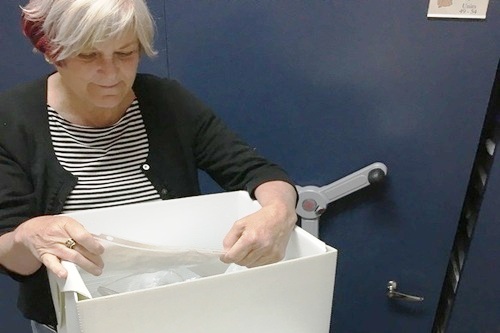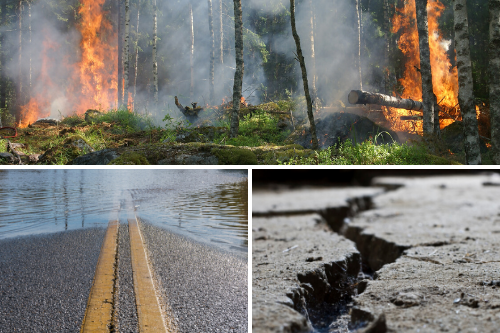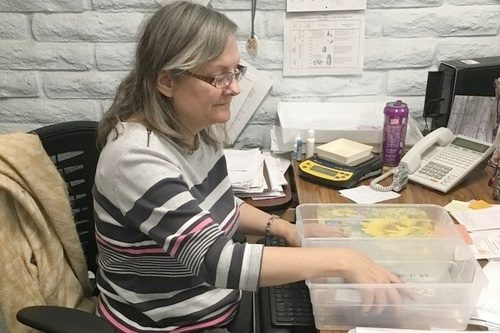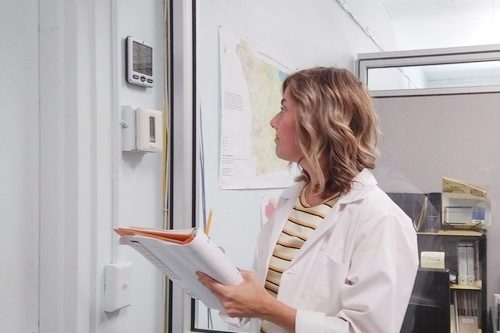
From Inside the Vaults: Deaccessioning Museum Collections
From Inside the Vaults is a monthly blog that gives insight into best practices for collections stewardship, curation, and archaeological collecting institutions.
What is Deaccessioning?
This year we have looked at different best practices used by Collections Managers to protect and preserve museum collections. While it may seem counterintuitive at first, one role of a Collections Manager is to periodically assess and recommend artifacts to be deaccessioned, or removed permanently from collections.
The disposal of artifacts may seem controversial, and that is why it is important for collecting institutions to have strong accession and deaccession policies. Many museums in recent past have come under fire for selling or disposing of artifacts that the community or donor may have deemed precious. Deaccessioning should be transparent to donors and the surrounding community. Controversial or not, deaccessioning may actually benefit the institution and the artifact.
Why Should Museums Deaccession Artifacts?
Many museums have been collecting artifacts for more than a century. As we’ve discussed previously, practices have changed over time and a lot of materials that may have been collected in the past, should not have been. Some of these materials may be out of the collecting institutions scope, or could possibly be deemed hazardous, or may make more sense in the care of a different institution. By having a strong accession policy in place that clearly lays out what the museum should and will collect, and what it will not collect, the need for deaccessioning in the future may be lessened.
Each institution should have a deaccessioning policy, and this policy should clearly define the criteria in which decision making occurs when an artifact is recommended for deaccession. The policy can usually be found within a collecting institution’s Collection Management Policy (CMP). Additionally, the disposal process of deaccessioned artifacts will be explained. Some examples of why artifacts may be considered for deaccession are:
- Out of scope or mission
- Not useful for research, exhibition, or educational purposes
- Duplicates artifacts already collected
- Hazardous/deteriorated materials
- Fits better with a more appropriate collecting institution
Why Does the SDAC Deaccession Artifacts?
Working with deaccessions at the SDAC is much different than my previous work with historic and natural history specimens. At history museums, when deaccessions were proposed it was typically because the artifacts were duplicative or out of scope of the types of artifacts that should be collected. At the natural history museum, many of our specimens were treated in the 1960s and had arsenic and other unsafe chemicals that were too hazardous to keep, handle, or conserve. The SDAC, a repository for archaeological artifacts, would not deaccession artifacts because they are duplicative since each site and set of artifacts tells a different story. Additionally, our artifacts are not hazardous and some deterioration is expected. One reason things could be deaccessioned at the SDAC is if they should be repatriated, or returned to a specific person or institution based on cultural sensitivity. Another reason would be because of lack of research or educational value. This happens when artifacts are removed by non-professionals and come to the Center undocumented with no provenance. These types of artifacts will be useless for research because they are missing their context. While the reasoning behind why we deaccession may differ based on type of institution, the processes, documentation, and disposal methods are similar.
How Do Museums Deaccession Artifacts?
The deaccession process must be well documented and thought out. A justification of why the artifact(s) is being proposed for deaccession should be written by a Collections Manager or Director, and should be attached to the CMP, where it clearly states that the deaccession criteria being met. The artifact(s) should be carefully examined to decide appropriate disposal practices, to ensure that the artifact is disposed of properly. Disposals may include: transfer to another collecting institution, sale of the artifact(s) [when applicable, and typically transfer is preferred], or physical destruction of the artifact – which may be appropriate for things like hazardous materials. The CMP should have disposal guidelines in place. There are many rules and best practices followed for disposals. For example, a Collections Manager should never acquire any artifacts that are being considered for deaccession, nor should their friends or family. This could pose an ethical problem in which the recommendation was made for personal gain. The governing board must approve all deaccessions; it cannot be left to a Collections Manager or Director alone. All documentation created for and during the deaccession process should be retained and saved for future reference. While it is not legally required to inform donors of deaccessioned artifacts, the collecting institution benefits from this level of transparency.
By adhering to the Museum’s mission, accession policy, and collecting scope, the need for deaccessioning can be decreased. The action of deaccessioning should be carefully considered and carried out and is a necessary role of Collections Managers at all collecting institutions to ensure that artifacts are cared for and in the proper place.
By Jessica McPheters, Collections Manager




